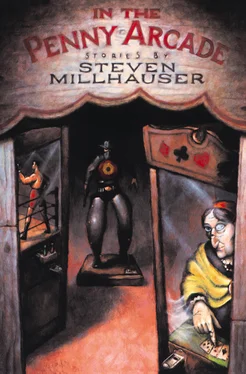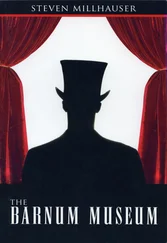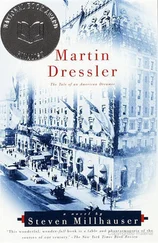CLOUDS
The clouds of Cathay are of an unusual purity of whiteness, and distinguish themselves clearly against the rich lapis lazuli of our skies. Perhaps for this reason we have been able to classify our cloud-shapes with a precision and thoroughness unknown to other lands. It may safely be said that no cloud in our heavens can assume a shape which has not already been named. The name is always of an object, natural or artificial, that exists in our empire, which is so vast that it is said to contain all things. Thus a cloud may be Wave Number One, or Wave Number Six Hundred Sixty-two, or Dragon’s Tail Number Seven, or Wind in Wheat Number Forty-five, or Imperial Saddle Number Twenty-three. The result of our completeness is that our clouds lack the vagueness and indecision that sadden other skies, and are forbidden randomness except in the order of appearance of images. It is as if they are a fluid form of sculpture, arranging themselves at will into a succession of imitations. The artistry of our skies, for one well trained in the catalogues of shape, does not cause monotony by banishing the unknown; rather, it fills us with joyful surprise, as if, tossing into the air a handful of sand, one should see it assume, in quick succession, the shape of dragon, hourglass, stirrup, palace, swan.
THE CORRIDORS OF INSOMNIA
When the Emperor cannot sleep, he leaves his chamber and walks in either of two private corridors, which have been designed for this purpose and have become known as the Corridors of Insomnia. The corridors are so long that a man galloping on horseback would fail to reach the end of either in the space of a night. One corridor has walls of jade polished to the brightness of mirrors. The floor is covered with a scarlet carpet and the corridor is brightly lit by the fires of many chandeliers. In the jade mirrors, divided by vertical bands of gold, the Emperor can see himself endlessly reflected in depth after depth of dark green, while in the distance the perfectly straight walls appear to come to a point. The second corridor is dark, rough, and winding. The walls have been fashioned to resemble the walls of a cave, and the distance between them is highly irregular; sometimes they come so close together that the Emperor can barely force his way through, while at other times they are twice the distance apart of the jade walls of the straight corridor. This corridor is lit by sputtering torches that leave long spaces of blackness. The floor is earthen and littered with stones; an occasional dark puddle reflects a torch.
HOURGLASSES
The art of the hourglass is highly developed in Cathay. White sand and red sand are most common, but sands of all colors are widely used, although many prefer snow-water or quicksilver. The glass containers assume a lavish variety of forms; the monkey hourglasses of our Northeast provinces are justly renowned. Exquisite erotic hourglasses, often draped in translucent silks, are seen in the home of every nobleman. Our Emperor has a passion for hourglasses; aside from his private collection there are innumerable hourglasses throughout the vast reaches of the Imperial Palace, including the gardens and parks, so that the Turner of Hourglasses and his many assistants are continually busy. It is said that the Emperor carries with him, sewn into his robe, a tiny golden hourglass, fashioned by one of the court miniaturists. It is said that if you stand in any of the myriad halls, chambers, and corridors of the Imperial Palace, and listen intently in the silence of the night, you can hear the faint and neverending sound of sand sifting through hourglasses.
CONCUBINES
The Emperor’s concubines live in secluded but splendid apartments in the Northwest Wing, where the mechanicians and miniaturists are also lodged. The proximity is not fanciful, for the concubines are honored as artificers. The walk of a concubine is a masterpiece of lubricity in comparison to which the tumultuous motions of an ordinary woman carried to rapture by the act of love are a formal expression of polite interest in a boring conversation. For an ordinary mortal to witness the walk of a concubine, even accidentally and through a distant lattice-window, is for him to experience a destructive ecstasy far in excess of the intensest pleasures he has known. These unfortunate courtiers, broken by a glance, pass the remainder of their lives in a feverish torment of unsatisfied longing. The concubines, some of whom are as young as fourteen, are said to wear four transparent silk robes, of scarlet, rose-yellow, white, and plum, respectively. What we know of their art comes to us by way of the eunuchs, who enjoy their privileged position and are not always to be trusted. That art appears to depend in large part upon the erotic paradoxes of transparent concealment and opaque revelation. Mirrors, silks, the dark velvet of rugs and coverlets, transparent blue pools in the concealed courtyard, scarves and sashes, veils, scarlet and jade light through colored glass, shadows, implications, illusions, duplicities of disclosure, a profound understanding of monotony and surprise — such are the tools of the concubines’ art. Although they live in the palace, they have about them an insubstantiality, an air of legend, for they are never seen except by the Emperor, who is divine, by the attendant eunuchs, who are not real men, and by such courtiers as are half mad with tormented longing and cannot explain what they have seen. It has been said that the concubines do not exist; the jest contains a deep truth, for like all artists they live so profoundly in illusion that gradually their lives grow illusory. It is not too much to say that these high representatives of the flesh, these lavish expressions of desire, live entirely in spirit; they are abstract as scholars; they are our only virgins.
BOREDOM
Our boredom, like our zest, can only be as great as our lives. How much greater and more terrible, then, must be the boredom of our Emperor, which flows into every corridor of the palace, spills into the parks and gardens, stretches to the utmost edges of our unimaginably vast empire, and, still not exhausted, but perhaps even strengthened by such exercise, rises to the height of heaven itself.
DWARFS
The Emperor has two dwarfs, both of whom are disliked by the court, although for different reasons. One dwarf is dark, humpbacked, and coarse-featured, with long unruly hair. This dwarf mocks the Emperor, imitates his gestures in a disrespectful way, contradicts his opinions, and in general plays the buffoon. Sometimes he runs among the Court ladies, brushing against them as he passes, and even, to the horror of everyone, lifting their robes and concealing himself beneath them. Nothing is more disturbing than to see a beautiful Court lady standing with this impudent lump beneath her robe. The ladies are nevertheless forced to endure such indignities, for the Emperor has given his dwarf freedoms which no one else receives. The other dwarf is neat, aloof, and severe in feature and dress. The Emperor often discusses with him questions of philosophy, art, and warfare. This dwarf detests the dark dwarf, whom he once wounded gravely in a duel; so far as possible they avoid each other. Far from approving of the dark dwarf’s rival, we are intensely jealous of his intimacy with the Emperor. If one were to ask us which dwarf is more pleasing, our unhesitating answer would be: we want them both dead.
EYELIDS
The art of illuminating the eyelid is old and honorable, and no Court lady is without her miniaturist. These delicate and precise paintings, in black, white, red, green, and blue ink, are highly prized by our courtiers, and especially by lovers, who read in them profound and ambiguous messages. One can never be certain, when one sees a handsome courtier gazing passionately into the eyes of a beautiful lady, whether he is searching for the soul behind her eyes or whether he is striving to attain a glimpse of her elegant and dangerous eyelids. These paintings are never the same, and indeed are different for each eyelid, and one cannot know, gazing across the room at a beautiful lady with whom one has not yet become intimate, whether her lowered eyelids will reveal a tall willow with dripping branches; an arched bridge in snow; a pear blossom and hummingbird; a crane among cocks; rice leaves bending in the wind; a wall with open gate, through which can be seen a distant village on a hillside. When speaking, a Court lady will lower her eyelids many times, offering tantalizing glimpses of little scenes that seem to express the elusive mystery of her soul. The lover well knows that these eyelid miniatures, at once public and intimate, half-exposed and always hiding, allude to the secret miniatures of the hidden eyes, or the eyes of the breast. These miniature masterpieces are inked upon the rosy areola surrounding the nipple and sometimes upon the sides and tip of the nipple itself. A lover disrobing his mistress in the first ecstasy of her consent is so eager for his sight of those secret miniatures that sometimes he lingers too long in rapturous contemplation and thereby incurs severe displeasure. Some Court ladies delight in erotic miniatures of the most startling kind, and it is impossible to express the troubled excitement with which a lover, stirred to exaltation by the elegant turn of a cheekbone and the shy purity of a glance, discovers upon the breast of his beloved an exquisitely inked scene of riot and debauchery.
Читать дальше












